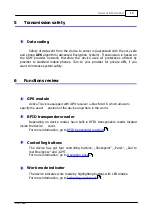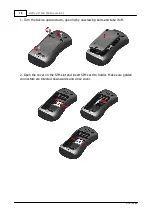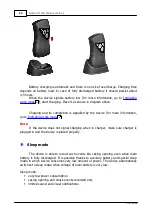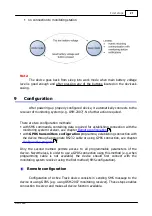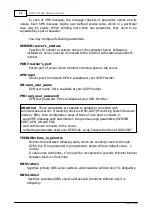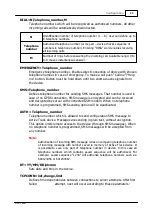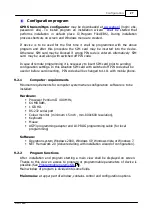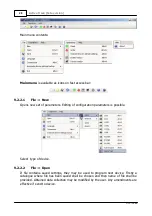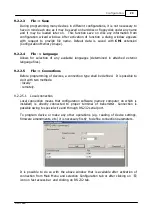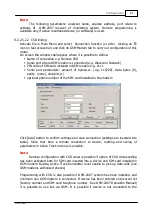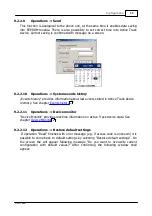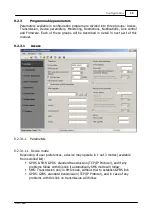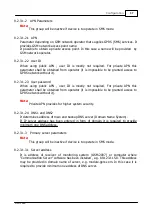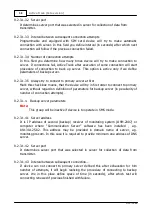
24
Active Track (beta version)
© 2013 EBS
init – initial time value (in minutes) after which connections attempts starts
change – defines how to change time period between attempts:
geometric progression - *x.yy, where x.yy is time in minutes with
1/100min precision
arithmetic progression - +x, where x is time in minutes
limit – maximum time between attempts.
Example 1.
TCPCONN=2,+1,5
Defines that after first failed attempt, next will occur after 2 minutes. If
second try will fail, time period will be increased by 1 minute (so next
attempt will occur after 3 minutes). Time period is limited to 5 minutes
(parameter: limit). Next attempts will occur after 5 minutes periods. If server
is disconnected, attempts to connect will look like that (P means connection
attempt, digit means time period in minutes): P, 2, P, 3, P, 4, P, 5, P, 5, P, 5,
P, ..........
Example 2.
TCPCONN=1,*1.5,4
Defines that after first failed attempt, next will occur after 1 minute. If
second try will also fail time period will by multiplied by 1.5, and next one will
occur after 1.5 minutes. Each next time period will by multiplied by 1.5 until
reach of 4 minutes. Next attempts will occur after 4 minutes. If server is
disconnected, attempts to connect will look like that (P means connection
attempt, number means time period in minutes): P, 1, P, 1.5, P, 2.25, P,
3.38, P, 4, P, 4, P, ..........
Default value: 1,+0,1
VOLUME=a,b,c,d,e,f, g
Defines method of signaling certain events. For each event different method of
signaling can be defined. Methods are:
0 – no acoustic signal, no vibration
1 – quiet acoustic signal, no vibration
2 - loud acoustic signal, no vibration
4 – no acoustic signal, vibration
5 – quiet acoustic signal, vibration
6 – loud acoustic signal, vibration
Order of events, which can be signaled with acoustic signal or vibration:
a) Start RFID loop
b) Read RFID confirmation
c) Discharged battery warning
d) Incoming voice call
e) SMS message received
f) EMERGENCY call started




